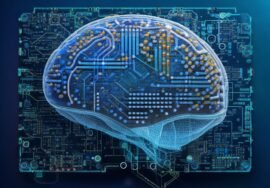
Beyond Web3: Towards a conversational, agentic “web4”
Web3 was about decentralization / blockchain, cryptocurrencies, NFTs, smart contracts, all designed to underpin a more “trust-driven” internet. But a new, subtler form of digital disruption, perhaps more profound than the PC and hardware revolution before it, is already under way: “Web4” in which everything you see on the screen disappears and interaction becomes direct, conversational and agentic.
An internet that speaks, behaves and foretells
In this new world, we are no longer “browsing”, we talk and ask and delegate. The browser transitions from being a passive displaying application to an interactive conversational agent that can comprehend our intents, take initiative and act upon them in our digital world.
Instead of typing keywords into Google, imagine simply saying:
“Plan me a weekend in Lisbon, budget $600 max, direct flights only, boutique hotel, and go ahead with the booking if you find a really good option.”
No endless lists of links to click through. The agent curates, compares, books, adjusts, effectively doing instead of just showing.
This evolution rests on two pillars:
- Agentic AI, systems that not only answer but also chain actions and make decisions.
- Context & memory, tools that remember preferences, histories, and project progress to act consistently over time.
- And this isn’t science fiction. Early implementations are already here.
The pioneers: Comet (Perplexity) and Aura (OpenAI). Two recent projects embody this shift. Comet, Perplexity’s agentic browser. Launched in July 2025, Comet is Perplexity’s chromium-based browser, deeply embedded with its AI engine.
Highlights include:
- Every page is interactive: highlight text and immediately ask for explanations, counterarguments, or related insights.
- Automates tasks: organizes tabs, translates automatically, extracts key points, summarizes content.
- Positions itself as a personal assistant: the tagline is “do more than browse.”
- Compatible with Chrome extensions, bookmarks, and user profiles.
- Privacy-focused modes, with options for local processing of sensitive data.
Challenges remain:
- Security, audits by Brave and Guardio flagged vulnerabilities that could allow malicious web content to manipulate the agent.
- Copyright and scraping concerns, some media accused Perplexity of reproducing content without explicit authorization.
- Adoption barriers, currently limited to “Max” subscribers ($200/month) and invite-only access for others.
In short, Comet is an early but powerful step toward what a Web4 browser could be.
Aura, OpenAI’s intelligent browser project. OpenAI is also entering the race with a browser project codenamed Aura.
What we know so far:
- Chromium-based, like Comet.
- Deep integration with ChatGPT, SearchGPT, and its Operator agent system.
- Mentions of “Aura Sidebar” in ChatGPT code leaks confirm integration experiments.
- Possible cloud browser mode, enabling agents to navigate the web even without direct user actions.
- Expected to shift from a “list of links” model to a conversational interface.
- Reuters reports Aura could soon challenge Google Chrome as an “AI-enabled browser.”
If Aura launches publicly, we may see a direct competition between OpenAI and Perplexity to define the first true “Web4″ browser.
“Web4”: promises and challenges
Promises:
- Fluidity, less friction between thought and action.
- Productivity, repetitive tasks (searching, sorting, summarizing) fully delegated.
- Personalization, tools that know our context and act as companions.
- Accessibility, a voice- or intent-driven web, lowering barriers to entry.
- New business models, subscription-based, action-oriented value delivery.
Challenges :
- Privacy and control, the more the agent does, the more it sees.
- Security, automated actions mean vulnerabilities can have bigger consequences.
- Bias and errors, what happens if the agent confidently acts on wrong assumptions?
- Power concentration, a few companies controlling the “agentic layer” could re-centralize the internet.
- Trust & adoption, many users will want manual oversight before delegating.
- Interoperability, agents will need standards and APIs to truly interact across services.
What it means for us, today. The “Web4” shift is already underway:
- Users are getting comfortable with conversational interfaces like ChatGPT, Claude, Gemini, Copilot.
- Early tools like Comet demonstrate real use cases, despite limitations.
- Developers and companies must now think “agentic design”, exposing APIs and workflows that AI agents can act upon.
- Marketers and content creators will need new strategies: if agents are the ones making decisions, how do you ensure your product or service makes the cut?
The Web3 era gave us decentralization and digital ownership. “The Web4” era may well be about invisible, fluid, agentic interaction, a web that doesn’t just display, but acts on our behalf.
The key question remains: are we ready to trust machines to act for us?



